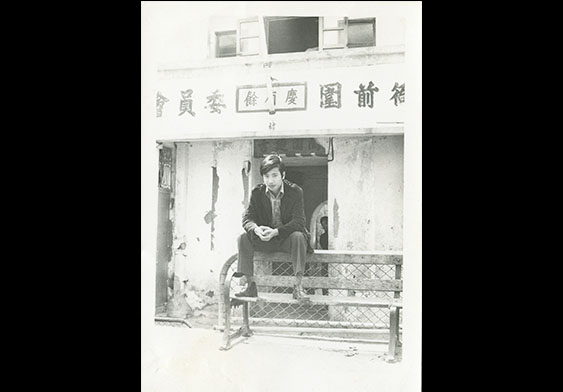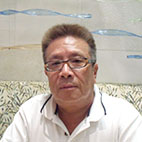
Ng Sui Kuen as a teenager
Ng Sui Kuen poses in front of Nga Tsin Wai’s gatehouse in 1972 after returning to Hong Kong from the UK to visit his relatives-Provided by Ng Sui Kuen
Ng Sui Kuen as a teenager
Ng Sui Kuen poses in front of Nga Tsin Wai’s gatehouse in 1972 after returning to Hong Kong from the UK to visit his relatives-Provided by Ng Sui Kuen
His whole family lived in an ancestral house in Nga Tsin Wai during his childhood
Ng Sui Kuen grew up and lived in Nga Tsin Wai until he emigrated to Britain. He learnt from his grandmother that in the past, his family owned many houses in Nga Tsin Wai, but they were sold one after another because of poor living. When Ng Sui Kuen was old enough to understand, the only ancestral home the family owned was the house at no. 16 on the 1st Lane. Ng Sui Kuen grew up in the ancestral house on the 1st Lane. The ancestral house was a two-storey stone house. It had an attic with a partitioned room. The area of the attic was the same as the floors beneath it.
Ng Sui Kuen lived with his grandmother, parents, an elder sister, two younger brothers and two younger sisters. Later on, they rented one half of the attic to a family of five. Ng Sui Kuen’s family slept on bunk beds while Ng Sui Kuen lived with his grandmother at the attic. They accessed the attic by climbing a wooden staircase. In 1961, as his father had left Hong Kong for Britain, and Ng Sui Kuen and his younger brothers and sisters were still little, the living area was sufficient generally. In summer, the children either slept on canvas cots or a mat placed on the floor. There was a bathroom in the house. Two pump gas-driven kerosene stoves were placed at the corner for cooking. They were later replaced by the electric rice cooker. The family had their meals at the anteroom. The children seldom stayed in the house. They would go to the gatehouse and play after meals


 BACK
BACK  CLOSE
CLOSE 